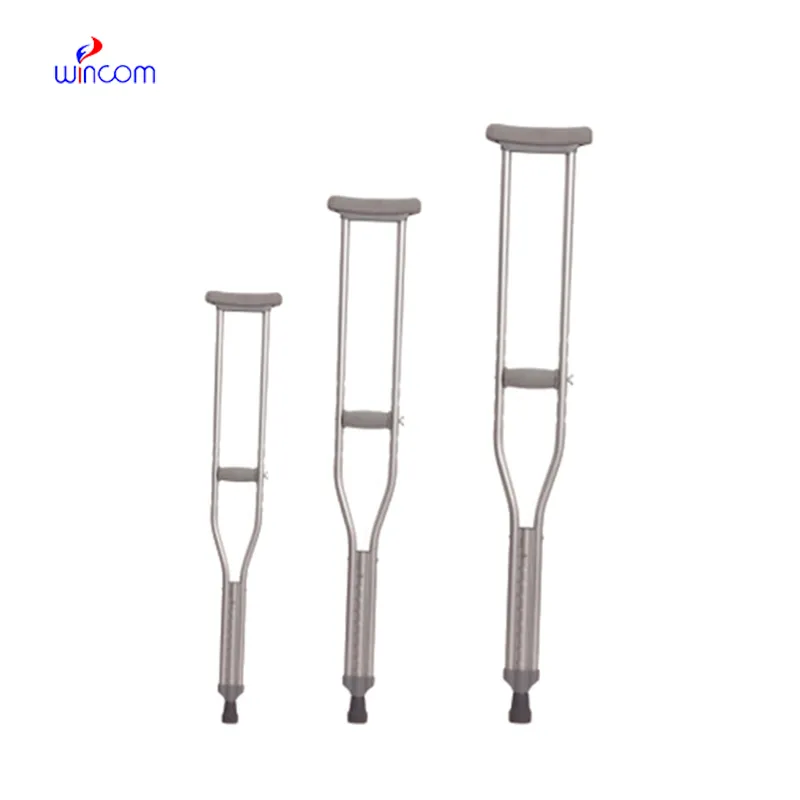
Blog
Arm crutches have been a key part of restoring mobility and independence to patients convalescing from surgery or injury for centuries. What was initially a basic walking aid is now a highly developed medical device that testifies to innovation in design, materials science, and production technology. The arm crutch today is not merely a support aid—it's an effective design product that promotes comfort, safety, and the outcomes of rehabilitation.
The first arm crutches were constructed from plain wood, usually home-made by local craftsmen. They were purely functional—delivering minimal stability and weight support. These early models were cumbersome, awkward, and prone to wear and splitting. Flexibility was low, so individuals would need to make or exchange crutches to accommodate height and requirements. Simple as they were, these first crutches laid the foundation for advanced assist devices employed today.
The development of the arm crutch took off with the advancement of light but strong materials. Aluminum, stainless steel, and carbon fiber replaced wood, producing more stable yet lighter crutches. Contemporary manufacturing methods—precision welding, CNC cutting, and ergonomic molding—allow for standardization of quality and performance.
Companies like ours invest a lot of resources in testing materials and optimizing production to make sure that each arm crutch is within international safety and performance standards like CE and FDA approvals. Industrial engineering and material innovation have not only guaranteed more reliability but also better overall user experience.
As medicine became more patient-centered, the same applied to the design of arm crutches. Today's models have ergonomic handles that are adjustable to fit the user's hand grip, height-adjusting mechanisms to promote better posture, and rubber tips with a non-slip coating to stabilize on various surfaces. The shock-absorbing systems and cushioned arm cuffs have revolutionized the comfort feature for long-term users.
User input and clinical trials are responsible for design refinements. Health practitioners and engineers work together to develop crutches that minimize stress, protect against pressure sores, and enhance the natural gait. Developed is a new generation of crutches that combine technological accuracy with human factors design.
The medical equipment sector is shifting towards smart, data-dependent products, and forearm crutches are not an exception. There are newer generations of products with sensors monitoring movement, weight-bearing, and offering feedback to both patients and medical staff as well.
Smart connectivity allows physicians to track progress milestones remotely, facilitating increased control over rehabilitation. Antimicrobial finishes, memory foam padding, and advanced shock-absorbing joints in the meanwhile are enhancing hygiene, safety, and convenience for users. Manufacturers who adopt such technologies place themselves at the forefront of the medical mobility industry.

The global arm crutch market is transforming with a growing need for quality, environmentally sustainable mobility equipment driven by an aging population. As a manufacturer and exporter to the world, we are committed to diverse market needs, compliance, ethical production, and sustainability. The arm crutch of the future is innovation—where convenience and new materials converge with green production to enhance user health and global health.
E-mail: [email protected]
Tel: +86-731-84176622
+86-731-84136655
Address: Rm.1507,Xinsancheng Plaza. No.58, Renmin Road(E),Changsha,Hunan,China